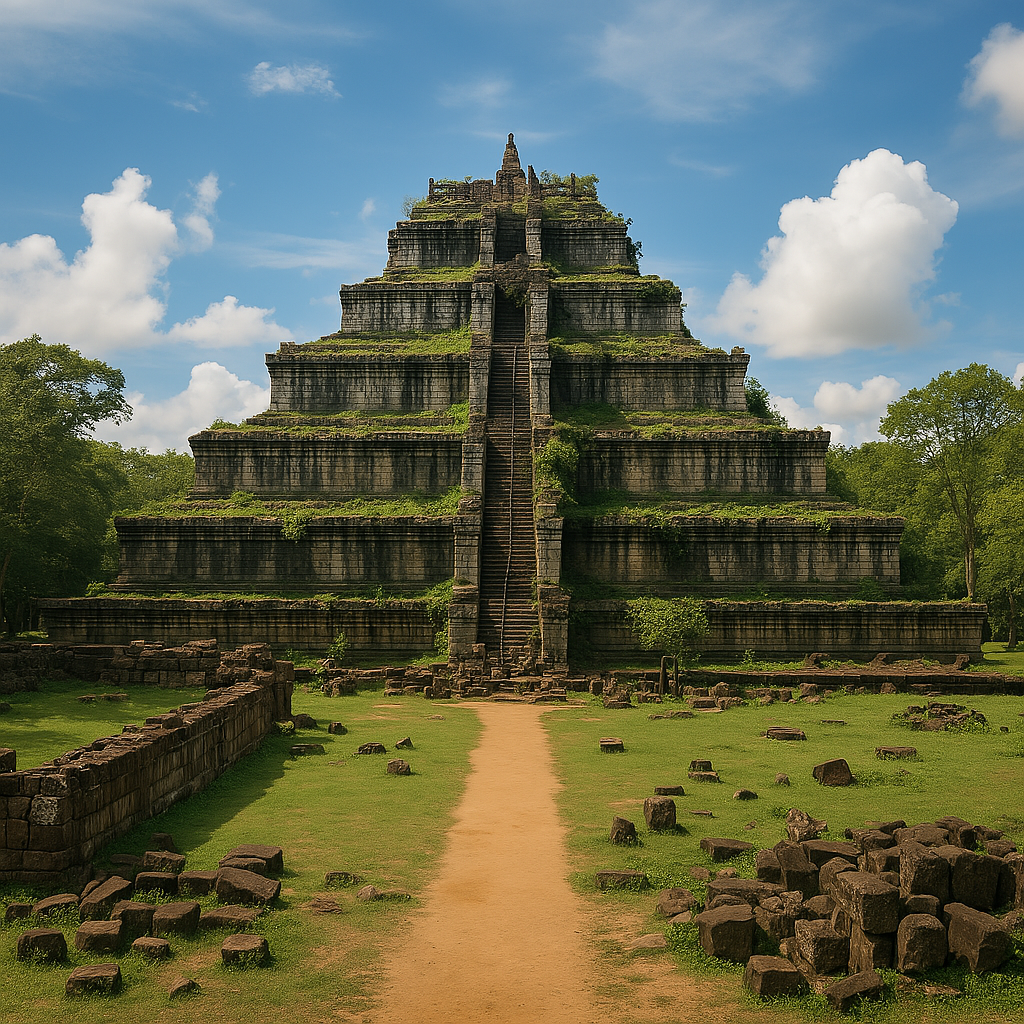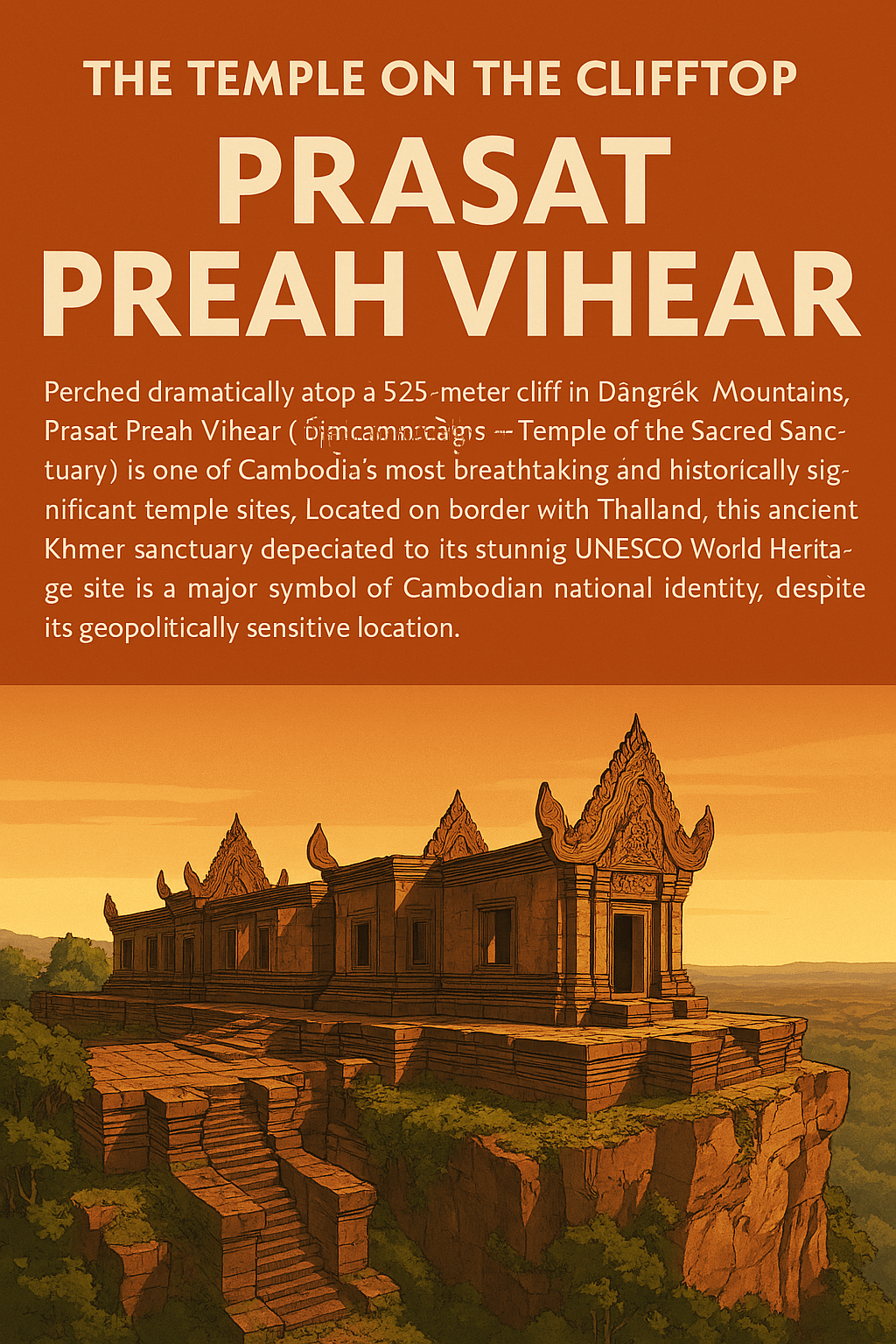Cambodia is custodian to an extraordinary architectural legacy, spanning the ancient pre-Angkorian temples of Sambor Prei Kuk, the unparalleled grandeur of Angkor Wat, the unique pyramid of Koh Ker, charming colonial-era towns like Battambang, and the visionary creations of the post-independence “New Khmer Architecture” movement. Ensuring the survival and integrity of this diverse heritage for future generations presents immense challenges and requires navigating a complex interplay of natural decay, modern pressures, and the imperative to balance preservation with national development needs as of 2025.
Enduring Stones, Persistent Threats: Challenges in Temple Preservation

The ancient stone and brick temples, Cambodia’s most famous landmarks, face inherent and ongoing threats:
- Natural Forces: Centuries of exposure to tropical sun, torrential monsoon rains, humidity, and wind cause gradual erosion and weathering of sandstone and brick. Encroaching jungle vegetation, particularly tree roots, can destabilize structures, while microorganisms, moss, lichen, and bat guano contribute to surface decay.
- Structural Instability: Many temples suffer from structural weaknesses due to age, original construction methods (like corbelled vaults), foundation issues in the Cambodian soil, or damage sustained during past conflicts or periods of neglect. The risk of collapse is a constant concern for conservators.
- Looting and Security: While significantly reduced compared to the chaotic post-conflict decades, the threat of looting of statues and architectural fragments remains, requiring ongoing security measures at numerous, often remote, sites.
- Resource Constraints: The sheer scale of Cambodia’s archaeological heritage vastly outstrips available national resources for comprehensive conservation. Sustained maintenance, research, and restoration rely heavily on international support and require more trained Cambodian conservation experts.
Modern Pressures: Climate Change and Tourism Impacts
Two major contemporary factors significantly impact Cambodia’s heritage sites:

- Climate Change: Predicted increases in the intensity of rainfall could accelerate erosion, cause more severe water damage, and impact site drainage systems. Conversely, longer and hotter dry spells might affect soil stability around foundations and increase heat stress on stone surfaces. Adapting conservation strategies to mitigate these climate impacts is becoming increasingly urgent.
- Tourism: Mass tourism presents a double-edged sword.
- Negative Impacts: High visitor numbers cause physical wear and tear on ancient structures, particularly delicate carvings, staircases, and floor surfaces. Increased traffic can lead to pollution and strain local infrastructure (waste, water). Development pressure for hotels and amenities around popular sites can damage the landscape, hydrology, and archaeological context if not carefully managed.
- Positive Impacts: Tourism, particularly through the Angkor Pass system, generates substantial revenue that is crucial for funding conservation work, site management, research, and demining efforts undertaken by the APSARA National Authority and other bodies. It also raises global awareness and fosters international support for preservation. Effective sustainable tourism management (regulating visitor flow, enforcing rules, zoning development) is essential to maximize benefits and minimize harm.
A Global Effort: The Role of International Organizations

The safeguarding of Angkor, and increasingly other sites like Koh Ker and Sambor Prei Kuk, has been a remarkable example of international cooperation since the early 1990s:
- UNESCO: Plays a vital coordinating role, particularly through the International Coordinating Committee for the Safeguarding and Development of the Historic Site of Angkor (ICC-Angkor). UNESCO World Heritage status helps attract global expertise and funding.
- Bilateral Partnerships: Numerous countries provide substantial funding and technical expertise for specific restoration and conservation projects. Japan (Bayon), France (Baphuon, Terrace of the Leper King), Germany (Angkor Wat reliefs), China (Ta Keo, sections of Angkor Wat), India (Ta Prohm), the USA, Italy, Switzerland, and others have made long-term commitments.
- NGOs and Institutions: Various international non-governmental organizations and academic institutions contribute through research, documentation, training programs, and smaller-scale conservation initiatives. This international collaboration works in partnership with Cambodian institutions like the APSARA National Authority and the Ministry of Culture and Fine Arts.
Local Guardians: Community-Led Initiatives

There is growing recognition globally that sustainable heritage management requires the active involvement of local communities living near the sites:
- Stewardship and Employment: Employing local residents as site guards, maintenance workers, and guides provides livelihoods and fosters a sense of ownership and responsibility for protecting their heritage.
- Benefit Sharing: Developing community-based tourism initiatives (local guides, homestays, handicraft sales, traditional food stalls) ensures that communities benefit directly from tourism revenue, creating economic incentives for conservation.
- Education and Awareness: Outreach programs run by authorities and NGOs help educate local communities, particularly young people, about the cultural and economic value of their heritage and the importance of conservation.
Building the Future, Respecting the Past: Balancing Tradition and Modernization

Looking forward, the overarching challenge lies in integrating heritage preservation into Cambodia’s broader national development goals:
- Urban Planning: Implementing effective urban planning strategies and enforcing regulations are crucial to managing urban sprawl and preventing inappropriate development from damaging archaeological sites or overwhelming historic city centers like Battambang or Phnom Penh. Heritage Impact Assessments should be standard practice for major projects.
- Protecting Diverse Heritage: Expanding legal protection and conservation efforts beyond ancient temples to include valuable colonial-era buildings and significant 20th-century structures (like those of the New Khmer Architecture movement) is vital for preserving the full narrative of Cambodia’s architectural history.
- Contemporary Design: Encouraging contemporary Cambodian architects and developers to create high-quality modern buildings that are sensitive to their historical context, perhaps drawing inspiration from traditional forms, materials, or climate-responsive principles, offers a path towards a culturally rooted modernity.
Conclusion
The future stewardship of Cambodia’s incomparable architectural heritage is a complex undertaking requiring sustained effort on multiple fronts. Addressing the inherent challenges of natural decay, mitigating the impacts of climate change and tourism, fostering international partnerships, empowering local communities, and embedding preservation principles within national development strategies are all essential components. As Cambodia continues to build its future in 2025, the commitment to safeguarding the legacies of Angkor, Koh Ker, Sambor Prei Kuk, and the historical character of its towns and cities like Battambang will be crucial in ensuring that this extraordinary heritage remains a source of knowledge, pride, and inspiration for generations to come.





